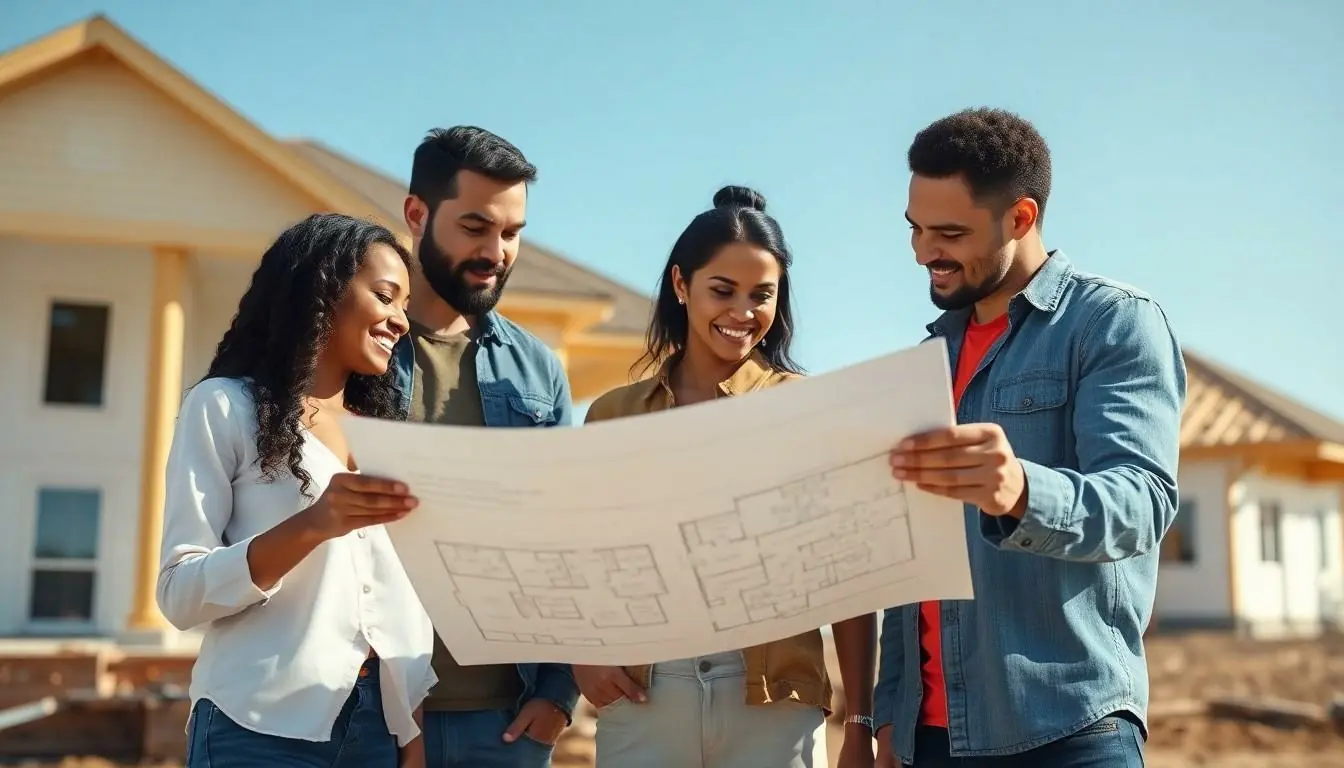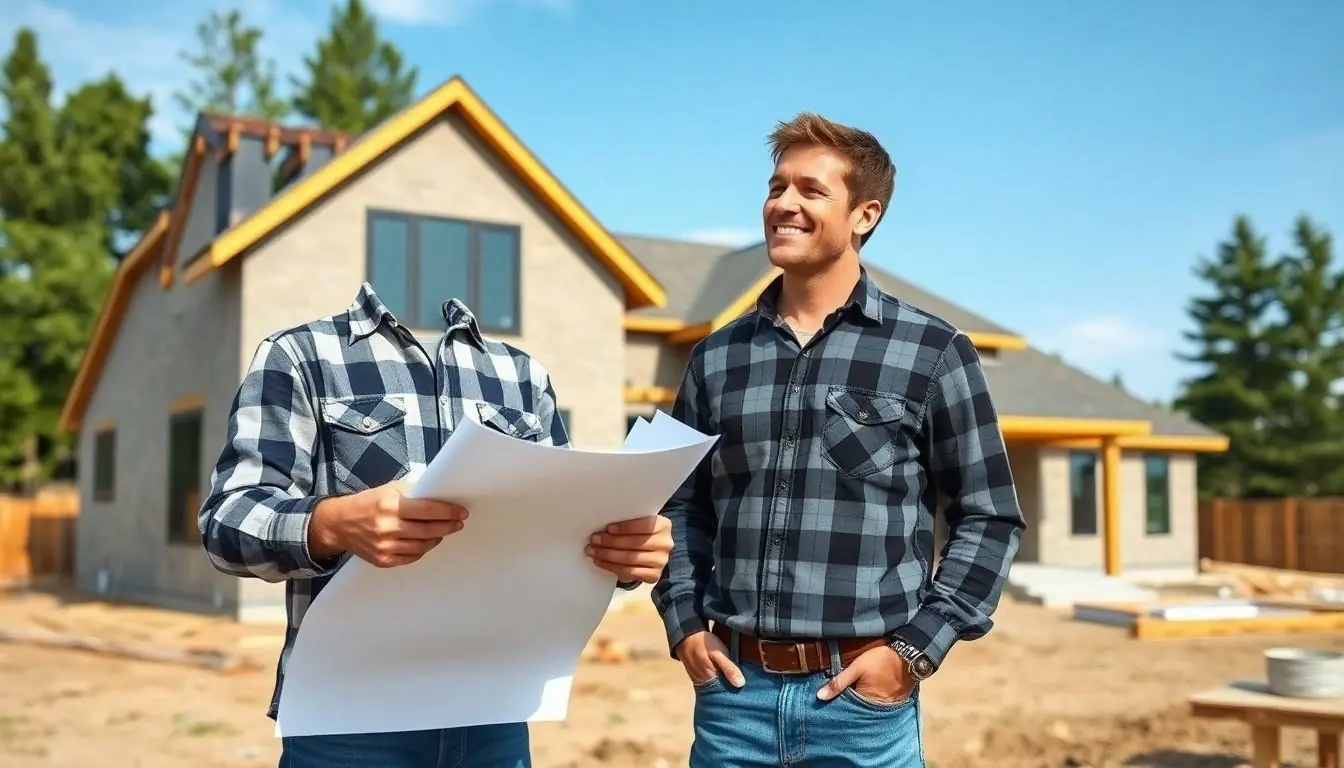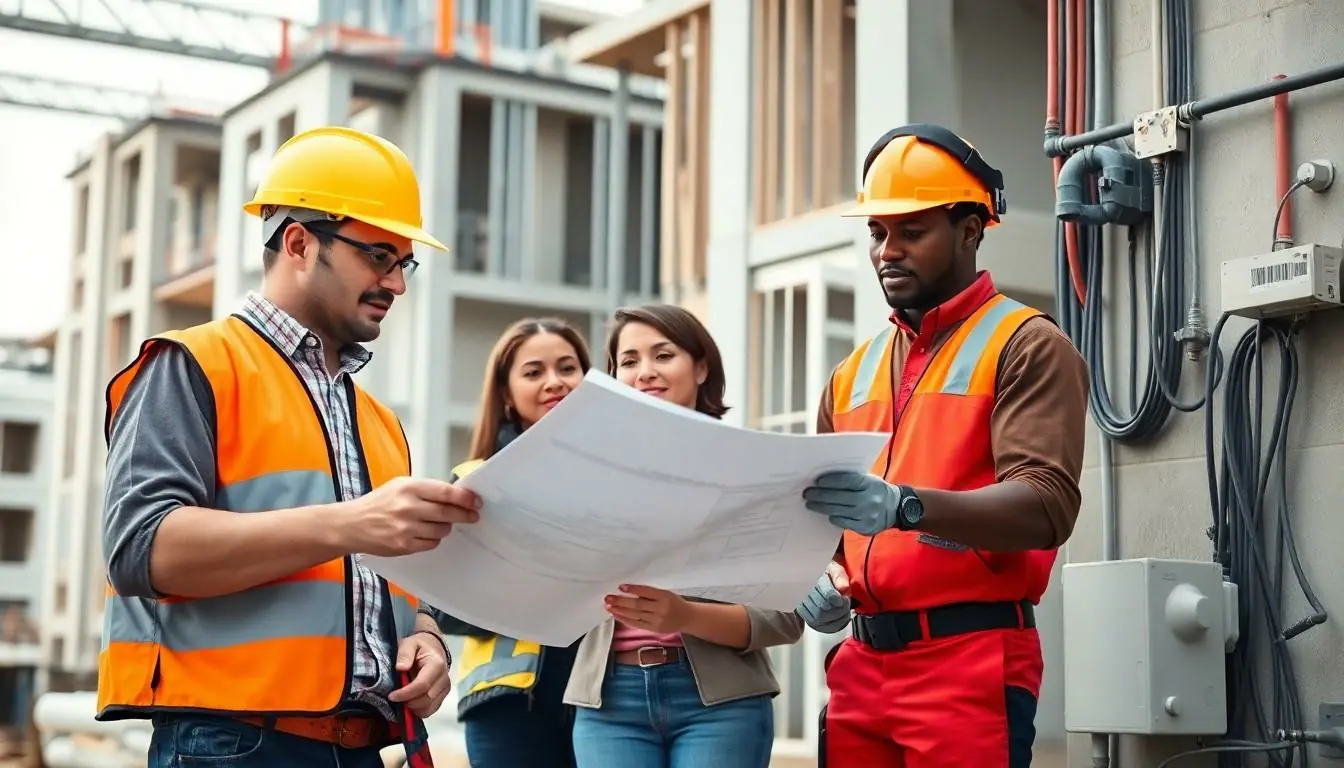Building a custom home is like crafting a masterpiece tailored just for you. It’s not just about bricks and mortar; it’s about creating a space that reflects personality and lifestyle. Imagine waking up every day in a home that feels like it was plucked straight from your dreams—no more settling for someone else’s vision!
Table of Contents
ToggleUnderstanding Custom Homes
Custom homes represent a unique opportunity for individuals to create spaces that reflect their personal styles and needs. These homes differ significantly from standard models, emphasizing individuality in both design and functionality.
What Is a Custom Home?
A custom home refers to a residence designed specifically for a particular homeowner. These homes fit the land’s specifications and incorporate the owner’s preferences throughout each phase of construction. Rather than choosing from predefined layouts or styles, buyers collaborate with architects and builders to craft a dwelling that matches their vision. This approach allows for unique architectural features, personalized layouts, and tailored finishes, ensuring every aspect resonates with the homeowner.
Benefits of Building a Custom Home
Building a custom home provides numerous advantages. Homeowners gain complete control over the design process, allowing for personal touches throughout the project. Flexibility in layout and features enables customization based on lifestyle and family needs. Energy efficiency can improve through the selection of modern materials and smart home technologies. Resale value often enhances due to the home’s appeal in the market, attracting buyers seeking unique properties. Lastly, a custom home fosters an emotional connection, as owners see their dreams materialize in a space uniquely their own.
Planning Your Custom Home

Planning a custom home involves crucial steps, starting with financial considerations and location selection. Each decision impacts the overall outcome and satisfaction with the final product.
Setting a Budget
Establishing a budget acts as a foundational step in the planning process. Costs vary significantly based on size, materials, and design complexity. Homeowners often account for land acquisition, construction expenses, and interior finishes when formulating their budget. Many experts recommend reserving 10 to 20 percent of the budget for unexpected expenses. Prioritizing key features helps allocate resources effectively, ensuring essential elements receive funding without overspending. Owners also explore financing options, including construction loans and mortgages, which can influence overall budget management.
Choosing the Right Location
Selecting an appropriate location significantly affects the home’s value and lifestyle convenience. Factors like proximity to schools, workplaces, and amenities play pivotal roles in this decision. Diverse neighborhoods provide unique experiences; some may offer tranquility, while others feature vibrant activity. Assessing land characteristics, such as terrain and drainage, informs homeowners about potential construction challenges. Community regulations and zoning laws can also impact where building occurs, so researching these aspects is essential. Ultimately, the chosen location should align with personal preferences and lifestyle needs, enhancing enjoyment of the custom-built home.
Designing Your Custom Home
Designing a custom home involves careful thought and creativity. This stage allows homeowners to visualize how their space will function and feel.
Key Considerations in Home Design
Location influences the design significantly, guiding decisions about layout and features. Homeowners should think about the lifestyle their home needs to support. Architectural styles also play a crucial role, as they should mirror personal tastes and local aesthetics. Energy efficiency can’t be overlooked, as modern designs often incorporate sustainable materials and systems, minimizing costs and environmental impact. Prioritizing natural light enhances ambiance and reduces reliance on artificial lighting. Flexibility in spaces ensures accommodations for future changes in family needs.
Working with Architects and Designers
Collaboration with architects enhances the design process. Designers provide valuable insights into spatial planning and aesthetics. Presenting a detailed vision helps them understand specific preferences and requirements. Engaging in open dialogue fosters creativity and innovation, allowing for more tailored solutions. Architects often suggest options that align with personal style while adhering to building codes and regulations. Regular meetings throughout the design process keep everyone aligned and engaged. Balancing personal desires with professional expertise ensures a home that meets practical needs while capturing the homeowner’s essence.
Selecting Materials and Finishes
Choosing the right materials and finishes shapes the overall aesthetic and functionality of a custom home. Both options significantly contribute to its durability and visual appeal.
Sustainable Building Materials
Using sustainable building materials plays a crucial role in modern construction. These materials, such as bamboo, reclaimed wood, or recycled metal, reduce environmental impact. They not only enhance energy efficiency but can also improve indoor air quality. Many homeowners opt for certified green products, which promote sustainability while resisting wear and tear. These options offer long-term benefits, including reduced energy costs and enhanced marketability.
Interior and Exterior Finishing Options
Selecting interior and exterior finishes influences the home’s final look and feel. Various choices exist, such as paint, siding, flooring, and countertops. Popular interior finishes include hardwood flooring, quartz countertops, and premium cabinetry, providing timeless appeal. For the exterior, homeowners often prefer materials like brick, stucco, or fiber-cement siding for durability. Incorporating personal style into these selections fosters a unique character and connection to the space.
Navigating the Construction Process
Navigating the construction process involves coordinating numerous elements to bring a custom home to life. Communication with all parties helps ensure smooth progress.
Hiring a General Contractor
Hiring a general contractor streamlines the building process. Contractors manage day-to-day operations, scheduling, and subcontractors. Experienced professionals enhance efficiency and adhere to timelines. Homeowners should prioritize transparency and check references before making a selection. Negotiating a clear contract defines roles, responsibilities, and costs, reducing misunderstandings. Each contractor brings unique strengths, so choosing one aligned with the homeowner’s vision is crucial.
Key Phases of Home Construction
Key phases of home construction start with site preparation and foundation work. Grading and excavation set the groundwork for a strong base. Next, the framing phase establishes the structure’s shape and layout. After framing, contractors install windows and roofing, which protect the interior from weather. Mechanical systems, including plumbing and electrical, follow closely, ensuring a functional layout. Finishing touches bring the project together, from drywall to paint selections. Each stage requires careful oversight to stay on schedule and within budget.
Ensuring Compliance and Permits
Building a custom home requires adherence to local regulations and obtaining the right permits. Compliance with these requirements ensures a smooth construction process.
Understanding Local Building Regulations
Local building regulations define the legal framework for construction. These rules vary by location, so homeowners must research regulations pertaining to zoning, setbacks, and building heights. The local building department provides necessary information and resources for compliance. Knowledge of these regulations helps avoid costly delays or modifications during construction. Collaborating with professionals familiar with local codes streamlines this process. Understanding fire safety laws and provisions for utilities also play a crucial role. Engaging with the community can expose homeowners to best practices and trends.
Obtaining Necessary Permits
Obtaining permits is an essential step in building a custom home. The process typically begins with submitting detailed plans and specifications to the local authority. A checklist of required permits includes building, electrical, plumbing, and mechanical permits. Homeowners must often pay fees associated with each permit application. Following submission, inspectors review plans to ensure compliance with local regulations. Timely acquisition of permits prevents interruptions during construction. Familiarity with local timelines assists homeowners in managing expectations effectively. Working closely with contractors can clarify necessary permits specific to the project.
Building a custom home is an exciting journey that allows homeowners to create a space that truly reflects their individuality. From the initial planning stages to the final touches, every aspect of the process offers opportunities for personalization and creativity.
By carefully considering budget, location, and design, individuals can ensure their new home meets both their practical needs and aesthetic desires. Collaborating with skilled professionals throughout this journey enhances the experience, making it not just a construction project but a fulfilling realization of dreams.
Ultimately, a custom home represents more than just a structure; it embodies a lifestyle and a vision brought to life.







